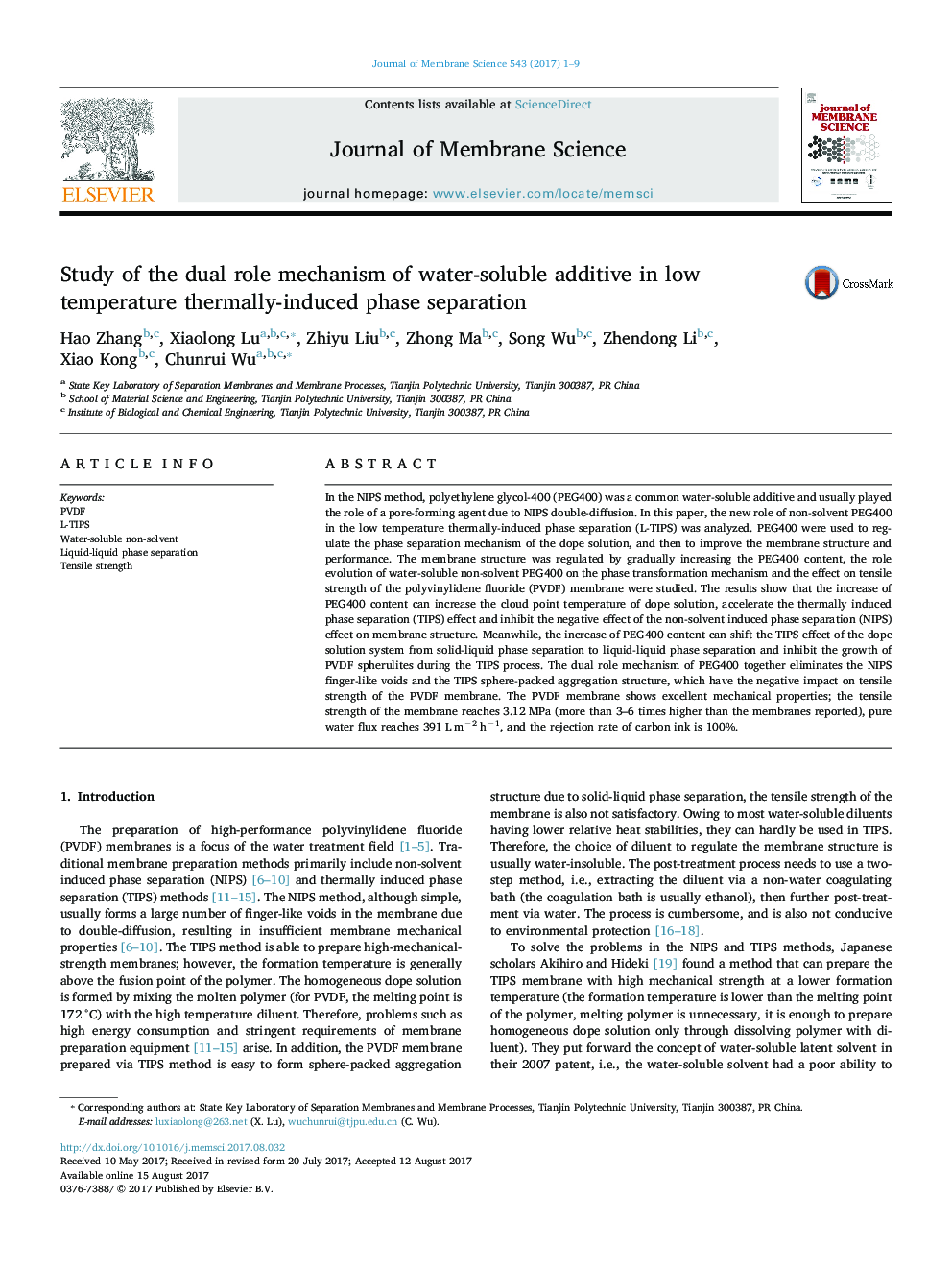| کد مقاله | کد نشریه | سال انتشار | مقاله انگلیسی | نسخه تمام متن |
|---|---|---|---|---|
| 4988524 | 1455956 | 2017 | 9 صفحه PDF | دانلود رایگان |
عنوان انگلیسی مقاله ISI
Study of the dual role mechanism of water-soluble additive in low temperature thermally-induced phase separation
ترجمه فارسی عنوان
بررسی مکانیسم نقش دوگانه افزودنی محلول در آب در جداسازی فاز ناشی از حرارت با درجه حرارت پایین
دانلود مقاله + سفارش ترجمه
دانلود مقاله ISI انگلیسی
رایگان برای ایرانیان
کلمات کلیدی
موضوعات مرتبط
مهندسی و علوم پایه
مهندسی شیمی
تصفیه و جداسازی
چکیده انگلیسی
In the NIPS method, polyethylene glycol-400 (PEG400) was a common water-soluble additive and usually played the role of a pore-forming agent due to NIPS double-diffusion. In this paper, the new role of non-solvent PEG400 in the low temperature thermally-induced phase separation (L-TIPS) was analyzed. PEG400 were used to regulate the phase separation mechanism of the dope solution, and then to improve the membrane structure and performance. The membrane structure was regulated by gradually increasing the PEG400 content, the role evolution of water-soluble non-solvent PEG400 on the phase transformation mechanism and the effect on tensile strength of the polyvinylidene fluoride (PVDF) membrane were studied. The results show that the increase of PEG400 content can increase the cloud point temperature of dope solution, accelerate the thermally induced phase separation (TIPS) effect and inhibit the negative effect of the non-solvent induced phase separation (NIPS) effect on membrane structure. Meanwhile, the increase of PEG400 content can shift the TIPS effect of the dope solution system from solid-liquid phase separation to liquid-liquid phase separation and inhibit the growth of PVDF spherulites during the TIPS process. The dual role mechanism of PEG400 together eliminates the NIPS finger-like voids and the TIPS sphere-packed aggregation structure, which have the negative impact on tensile strength of the PVDF membrane. The PVDF membrane shows excellent mechanical properties; the tensile strength of the membrane reaches 3.12Â MPa (more than 3-6 times higher than the membranes reported), pure water flux reaches 391Â LÂ mâ2Â hâ1, and the rejection rate of carbon ink is 100%.
ناشر
Database: Elsevier - ScienceDirect (ساینس دایرکت)
Journal: Journal of Membrane Science - Volume 543, 1 December 2017, Pages 1-9
Journal: Journal of Membrane Science - Volume 543, 1 December 2017, Pages 1-9
نویسندگان
Hao Zhang, Xiaolong Lu, Zhiyu Liu, Zhong Ma, Song Wu, Zhendong Li, Xiao Kong, Chunrui Wu,
